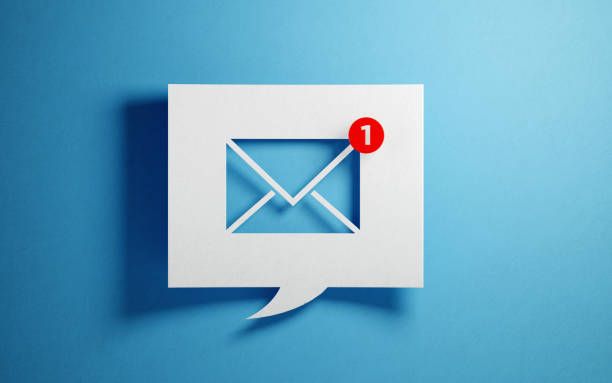In the world of email marketing, understanding your campaign performance is crucial for success. One important metric that reflects the effectiveness of your email campaigns is the bounce rate. Email bounce rate calculates the percentage of emails that were not successfully delivered to recipients' inboxes. By accurately calculating the bounce rate, you can gain valuable insights into the health of your email list, the quality of your email content, and the overall deliverability of your campaigns. In this comprehensive guide, we will delve into the intricacies of email bounce rate calculation and provide expert tips and best practices to help you optimize your email marketing efforts.
Understanding Email Bounce Rate

Email bounce rate measures the percentage of emails that were not delivered to recipients' mailboxes. Bounces occur when the email is returned by the recipient's mail server or when it fails to reach the intended destination. Bounces are categorized into two main types: hard bounces and soft bounces.
- Hard Bounces: Hard bounces occur when an email fails to be delivered permanently. This can happen due to reasons such as an invalid or non-existent email address, a blocked domain, or a recipient's server rejecting the email.
- Soft Bounces: Soft bounces are temporary delivery failures. These can be caused by reasons like a full inbox, a recipient's server being temporarily unavailable, or a message size exceeding the recipient's mailbox limit.
Calculating Email Bounce Rate

To calculate the email bounce rate, you need to divide the number of bounced emails by the total number of emails sent and multiply the result by 100 to get the percentage. The formula for calculating bounce rate is as follows:
Bounce Rate = (Number of Bounced Emails / Total Number of Emails Sent) x 100
For example, if you sent out 1,000 emails and received 50 bounces, the calculation would be:
Bounce Rate = (50 / 1,000) x 100 = 5%
By monitoring your email bounce rate over time, you can track the effectiveness of your campaigns, identify potential issues, and make necessary improvements to enhance deliverability.

Interpreting Email Bounce Rate

Understanding the significance of email bounce rate is crucial for optimizing your email marketing efforts. Here are some key points to consider when interpreting your bounce rate:
- Benchmarking: Compare your bounce rate against industry benchmarks to assess how well you are performing. Benchmark data can provide valuable insights into what is considered normal for your industry and help you set realistic goals.
- Differentiate between Hard and Soft Bounces: Analyze the types of bounces you are experiencing to identify underlying issues. A high rate of hard bounces indicates problems with your email list quality, while a high rate of soft bounces may point to temporary issues with recipient servers or email deliverability.
- List Hygiene: Regularly clean your email list to remove invalid or inactive email addresses. By maintaining a healthy and up-to-date email list, you can reduce the chances of encountering bounces.
- Engagement and Content Analysis: Analyze the bounce rate in conjunction with other engagement metrics, such as open rates and click-through rates. A high bounce rate coupled with low engagement may indicate issues with your email content, subject lines, or targeting.
Best Practices to Reduce Email Bounce Rate
- Use Double Opt-in: Implement a double opt-in process to verify email addresses and ensure that subscribers have actively confirmed their interest in receiving your emails. This helps eliminate typos and invalid email addresses from entering your list.
- Regularly Clean Your Email List: Perform regular list hygiene by removing email addresses that have hard bounced multiple times or those that have remained inactive for a long period. Use email validation tools to identify and remove invalid or risky email addresses.
- Segment Your Email List: Segmenting your email list allows you to send targeted and relevant content to specific groups of subscribers. By delivering content tailored to their interests, you can improve engagement and reduce the chances of bounces.
- Monitor Email Delivery Reports: Keep a close eye on your email delivery reports to identify any patterns or trends in bounces. This can help you pinpoint potential issues, such as problematic domains or email clients, and take corrective actions.
- Test Email Campaigns: Before sending out large-scale email campaigns, conduct thorough testing to ensure optimal deliverability. Test your emails across different devices, email clients, and spam filters to identify and resolve any formatting or deliverability issues that may result in bounces.
Conclusion
Mastering the calculation and interpretation of email bounce rate is essential for optimizing your email marketing campaigns. By accurately measuring and analyzing bounce rate data, you can identify areas for improvement, enhance email deliverability, and maximize engagement with your target audience. Implement the best practices outlined in this comprehensive guide to reduce bounce rates, maintain a healthy email list, and achieve higher campaign performance. Remember, regular monitoring, testing, and continuous improvement are key to achieving success in email marketing.
Frequently Asked Questions
Q1: What is a good email bounce rate?
A good email bounce rate typically falls within the industry benchmark range, which can vary depending on factors such as the type of email, target audience, and industry. As a general guideline, a bounce rate below 2% is considered excellent, while a rate between 2-5% is average. However, it's important to note that benchmarks may differ, so it's best to compare your bounce rate against industry-specific data for a more accurate assessment.
Q2: How can I reduce email bounces?
To reduce email bounces, follow these best practices:
- Use double opt-in to verify email addresses.
- Regularly clean your email list and remove invalid or inactive addresses.
- Segment your email list for targeted campaigns.
- Monitor email delivery reports and address any issues promptly.
- Test your email campaigns across different devices, clients, and filters.
- Ensure your email content is engaging, relevant, and compliant with spam regulations.
Q3: What are the consequences of high bounce rates?
High bounce rates can negatively impact your email marketing efforts. They can result in damage to your sender reputation, increased chances of being marked as spam, and reduced deliverability. Internet service providers (ISPs) and email clients closely monitor bounce rates to determine the quality of your email list and the legitimacy of your campaigns. Consistently high bounce rates may lead to your emails being blocked or marked as spam, limiting your reach and potential conversions.
Q4: What is the difference between a hard bounce and a soft bounce?
A hard bounce occurs when an email fails to be delivered permanently. This can happen due to reasons such as an invalid or non-existent email address or a blocked domain. A soft bounce, on the other hand, is a temporary delivery failure. Soft bounces are typically caused by issues like a full inbox, a recipient's server being temporarily unavailable, or a message size exceeding the recipient's mailbox limit.
Q5: Are there any tools available to help with email bounce rate calculation?
Yes, there are several email marketing and analytics platforms that provide tools and reports to help you calculate and track email bounce

